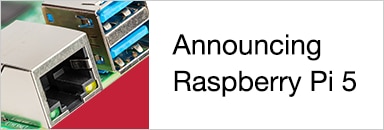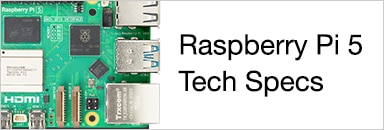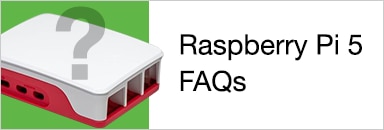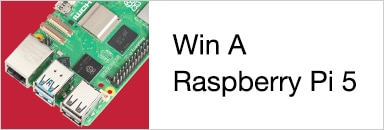[Updated 03 January 2020 - see addendum at bottom of the page]
I was lucky enough to win one of the 20 Raspberry Pi 4s in the element14 "Happy 10th Birthday!" giveaway. My suggestion was to use the Pi 4 to run Pi-Hole on my network to block unwanted adverts that slow down my browsing (and not just me - everybody in the household). This worked really well and I'll blog about it shortly.
I've been reading reports of people using the Pi 4 as a low-cost desktop computer and tried that out myself by adding a screen and one of the new Raspberry Pi Keyboard /Mouse combos. Not forgetting an official Raspberry Pi 4 power supply . I was pleasantly surprised at how usable it was. However, I'm running low on desk space to hold another monitor/keyboard so I haven't really made much use of it.
I recently noticed that element14's sister site CPC Farnell in the UK was selling off the original Pi-Top (Raspberry Pi laptop kit) for £80 plus VAT. It originally cost around £200. For £80 you get an (almost) empty laptop shell, with a large capacity (43-watt-hour) Li-ion battery, keyboard (with trackpad), a 1366x768 resolution TFT LCD screen and 3A power supply. Oh yes, it also includes an 8Gb SD card with Pi-TopOS on it (a version of Raspbian with a different windowing system) and various utilities that allow you to monitor the battery level onscreen and control the screen brightness with the keyboard buttons. I said "almost empty" because the laptop shell has a Pi-Top custom control board for battery charging as well as screen and keyboard connections.
The original Pi-Top was followed by a Pi-Top 2 (a new version of the laptop, later and somewhat confusingly renamed Pi-Top[3]), the Pi-Top Ceed (a screen with a compartment for your Raspberry Pi, but no keyboard or mouse) and, in July 2019, the Pi-Top[4] - which is an entirely different design aimed more at STEM education.
Both versions of the Pi-Top laptop (and the Ceed) were designed for the Raspberry Pi 3. Due to the different USB and Ethernet port layout of the Pi 4, it won't fit the current version of the Pi-Top or the Pi-Top Ceed because the later cases have a moulded cutout into which the Pi 3 ports exactly fit.
However, I suspected that the Pi 4 could be made to fit inside the original Pi-Top because the ports aren't designed to line up exactly with the cutout anyway. So, I snapped up one of the £80 Pi-Tops and set to work. I figured that I could always use it with a Raspberry Pi 3 if it didn't work.
The kit arrived and I got started. First, I assembled the case per the enclosed instructions, but added the Pi 4 in place of the Pi 3. The cables provided in the Pi-Top kit were designed for the micro USB power connector and full-sized HDMI connector of the Pi 3 (which were changed in the Pi 4 to USB C and micro HDMI). The power connector was no problem - I just added an official Raspberry Pi micro USB to USB C adapter . The HDMI connector was more of a problem. The cable provided in the kit is only about four inches long and doesn't take up much space. Replacing that with an official Raspberry Pi 4 HDMI to micro HDMI cable was hopeless as the cable is too long and stiff and the plugs are too fat and fouled on the Pi-Top's battery compartment. It was also impossible to fit all of that wiring under the keyboard. I tried adding spacers under the PI 4 to raise it up a little so that the HDMI plug didn't foul on the battery compartment but then the Pi 4 was too high and the USB ports fouled on the sliding lid. I hunted around online and found that CPC were selling 0.7m HDMI to micro HDMI cables with thin, flexible wires that I could arrange neatly under the keyboard. The only problem was the fatness of the micro HDMI plug. I used an X-ACTO knife to slice away most of the plastic on the underside of the plug (it's upside down in the photos below) and was happy to find that it just fits without fouling the battery compartment.
The sliding Pi-Top lid also just clears the top of the Pi 4 USB connectors (by about 1mm). Phew!
I fired it up and everything seemed to work. However, the included version of Pi-TopOS was based on Raspbian Jessie, which is quite old now and I didn't really want to be running that on a Pi 4. It turns out that in September, Pi-Top released a new version of Pi-TopOS for their Pi-Top 4 that is based on the July 2019 version of Raspbian (Buster). I downloaded that and installed it and it booted up. So far, so good.
Part of the installation process includes Pi-TopOS checking for updates. This is where things went wrong! It seems that applying the updates (which brings it up to the September 2019 version of Buster) stopped the display from working. I tried it several times. To be fair, the September 2019 version of Pi-TopOS isn't intended to support the 2015 Pi-Top.
I then thought I'd just try the latest plain version of Raspbian Buster (i.e. without Pi-TopOS) and that worked really well, and it was noticeably faster than Pi-TopOS. The only problem with that is that I didn't then have the battery monitor widget on the desktop panel. This is pretty essential on a laptop as you don't want to lose your work when the battery runs out. Luckily, Rene Richarz has documented how you can add the hardware-specific parts of Pi-TopOS (particularly the battery monitor widget) to the vanilla version of Raspbian Buster.
I found that some of the special keys on the Pi-Top keyboard still worked (like the keys to open file explorer and terminal) and the "Pi-Top" key opens the Raspbian "start menu", but there are still seven keys marked P1 to P7 not assigned to anything. I followed this Tom's Hardware guide to assign them to useful functions like screenshot (the Linux "scrot" command).
I have to say that this combination of Pi-Top 1 and Raspberry Pi 4 is fantastic. I can sit on the sofa and fiddle around with the Raspberry Pi 4 without having to set up an extra screen and keyboard on my desk and, in fact, I wrote this blog post on it!
I feel a bit sorry for people who have bought the Pi-Top[3] because they are stuck with using the Raspberry Pi 3 and won't get to experience the smoother performance of the Pi 4 (although they do have a better keyboard). The faster processor and increased memory of the Pi 4 means that it zips along, and browsing using Chromium is positively enjoyable even with multiple tabs open, whereas it was annoyingly slow on a Pi 3. The battery lasts a good 8 hours running the Pi 4. I was so pleased with the setup that I bought a Pi-TopPROTO, which allows me to add HATs/pHATs and even bare components to the Pi and fiddle away to my heart's content.
This is one pretty cool laptop! (Or it will be after I add a decent heatsink to the Pi 4  ).
).
Addendum 03 January 2020
I have pimped up my Pi-Top!
I fitted a Pimoroni passive heatsink to keep things cooler and a Pi-Top Speaker v2 for sounds. The Pi-Top Speaker is an interesting device. It's actually a small loudspeaker connected to the Raspberry Pi via I2C through a HiFiBerry-compatible DAC. It uses the Raspberry Pi's I2S channel.
I also bought a Grove Base Hat for Raspberry Pi, which fits on top of the Pi-Top PROTO and is great for a bit of quick prototyping (as well as providing four useful 12-bit analogue ports to the Raspberry Pi via its built-in STM32 MCU).
Amazingly, it all (just) fits under the sliding perspex cover.
Having used the Raspberry Pi 4 Pi-Top for several weeks now, I have found it to be an amazingly handy and versatile device. I can either use it as a normal laptop, or slide the perspex cover off, attach components (or HATs) and do some prototyping. The only thing I would change (if I could) would be the keyboard, as the keys are a bit small and flimsy, but it is no worse than the official Raspberry Pi keyboard!





















Top Comments